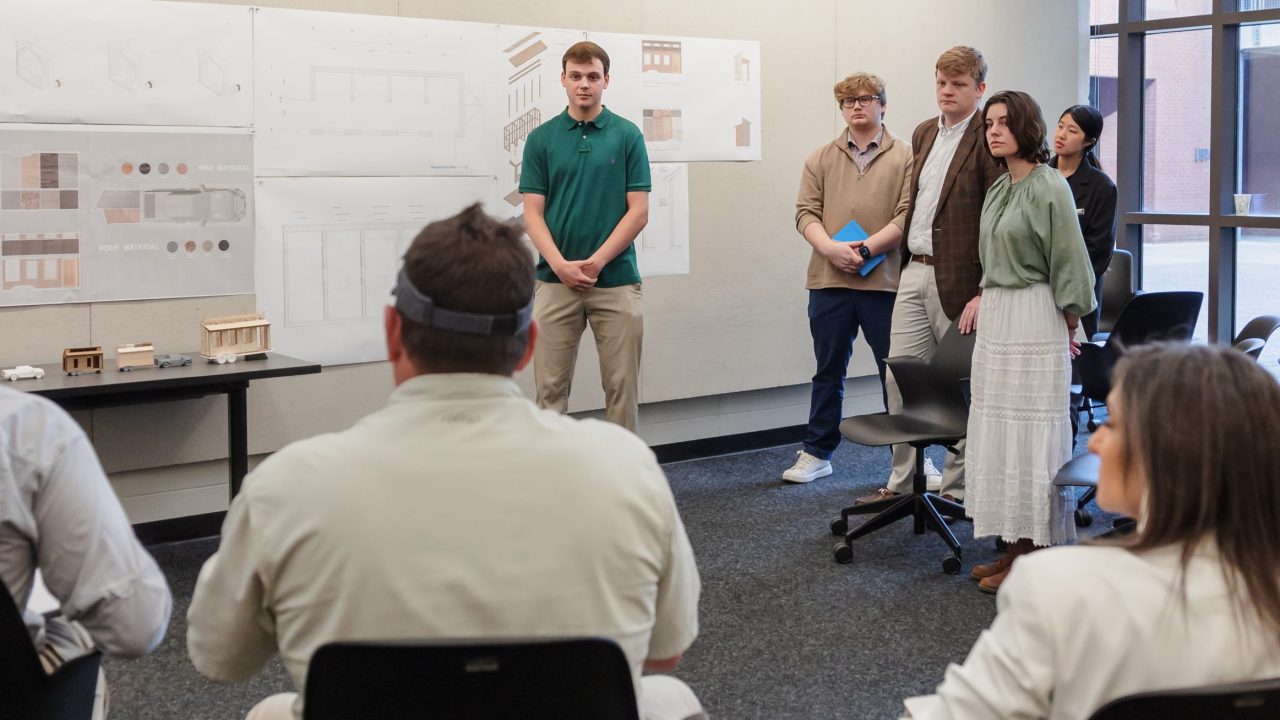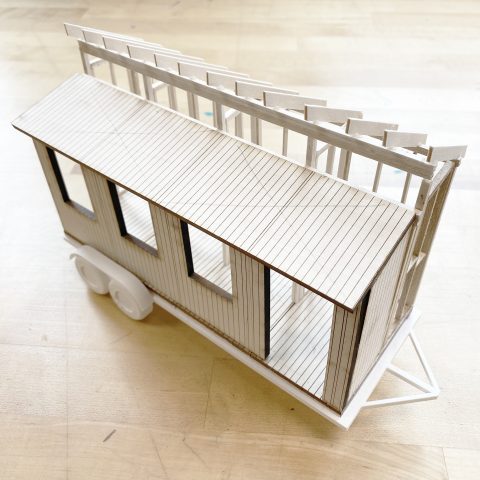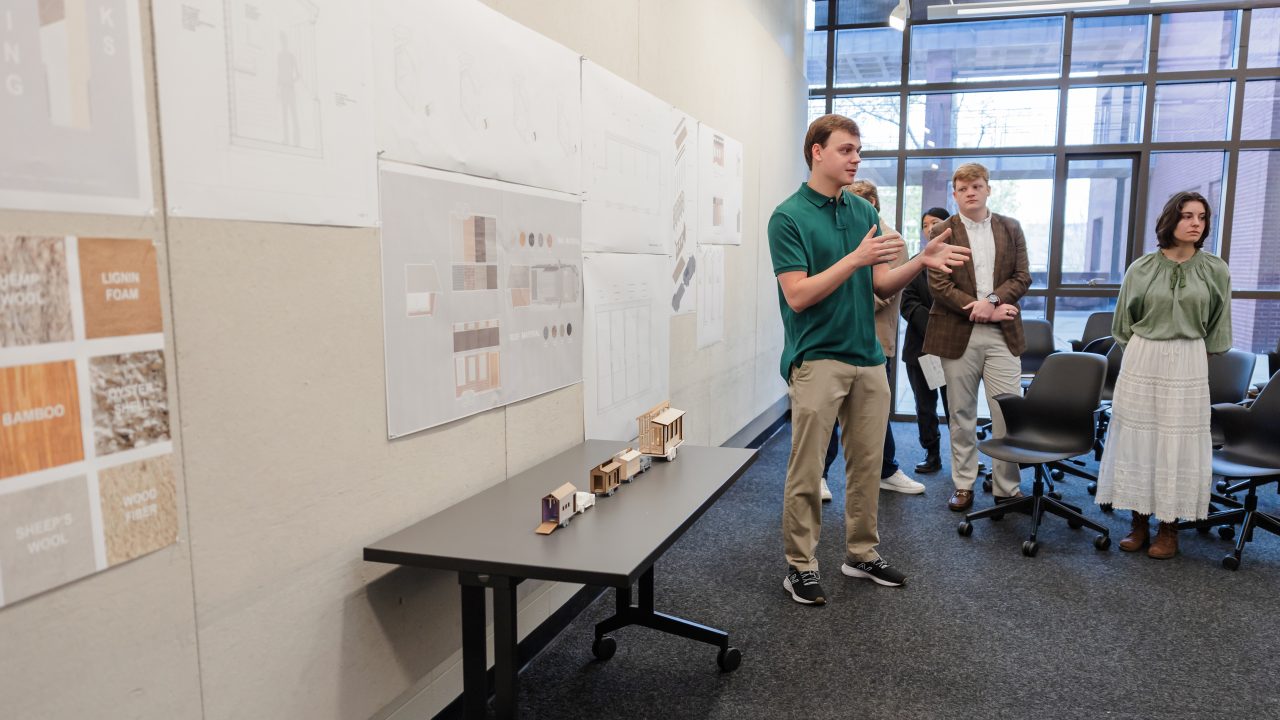CADC Rolls Forward with Design of Mobile, Bio-Based Pavilion

Interdisciplinary collaborators at Auburn are wrapping up designs and kicking off construction for a mobile demonstration pavilion that will display sustainable alternatives to conventional construction.
In the fall of 2024, faculty from the College of Architecture, Design and Construction (CADC) and the College of Forestry, Wildlife and Environment (CFWE) teamed up with the HudsonAlpha Institute for Biotechnology, based in Huntsville, Alabama, to research bio-based construction materials.
Using funds from the Alabama Research and Development Enhancement Fund (ARDEF) and a matching contribution from HudsonAlpha, the collaborators envisioned a mobile demonstration pavilion that could be taken to trade shows and construction conventions, expanding the exposure to bio-based materials throughout industry partners in the Southeast.
“The goal of the research is to demonstrate the use of healthy, low carbon, bio-based construction materials for residential construction,” said David Shanks, an assistant professor in the School of Architecture, Planning and Landscape Architecture (APLA). “We’re focusing on utilizing local Alabama forestry and agricultural resources in building construction for economic and workforce development in the state.”



During the Spring 2025 semester, Shanks ran a six-student seminar for fourth- and fifth-year Architecture students entitled “Biogenic Building Blocks: Exploring Bio-based Construction Materials for Low-Carbon Design.” CFWE faculty Brian Via, Yucheng Peng and Maria Soledad Peresin, who founded Auburn’s Sustainable Bio-Based Materials Laboratory, advised the students and shared their expertise on the nano-scale interworking and impacts of timber construction.
We're focusing on utilizing local Alabama forestry and agricultural resources in building construction for economic and workforce development in the state
The students designed a wood-based pavilion that sits on a steel trailer chassis and functions as a library of materials. Composed of four niche spaces arranged along a corridor, the pavilion allows occupants to view a progression of common synthetic construction materials to more experimental, bio-based materials.
Divided into two timber construction types, the pavilion employs conventional stick framing for the niches and cross-laminated timber (CLT) for the corridor to demonstrate the opportunities for Alabama’s softwood resources. The design also utilizes OSB with soy flour adhesive that Via, who also serves as the Director of the Forest Products Development Center, developed as a replacement for formaldehyde.
This summer, Caliber Trailers in Ozark, Alabama, will manufacture the chassis. Rising APLA thesis student Abi Collins is helping coordinate the fabrication and source materials for construction in the fall.

McWhorter School of Building Science (BSCI) students will take over the construction as part of their Service Learning course led by Associate Professor Alan Bugg and Professor Paul Holley, Director of the Center for Construction Innovation and Collaboration. Completion is slated for December 2025 with plans to debut the demonstration at industry events starting in 2026.
See more in:
Faculty Collaboration, Student Experience, Student Work
Related people:
David Shanks, Paul Holley